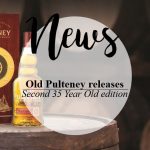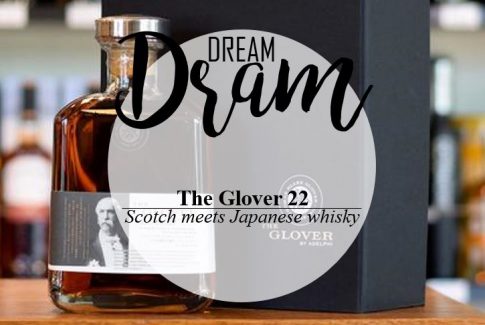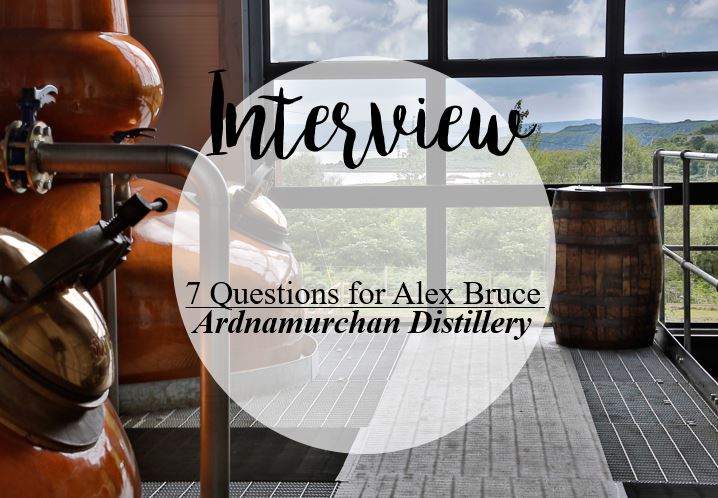
Ardnamurchan is one of the UK’s great unspoiled wildernesses. Rugged, isolated and utterly wild, it juts into the Atlantic at the most westerly point of the British mainland. And this beautiful part of the world is also home to one of the most recently-built Scottish distilleries: Ardnamurchan Distillery, a project brought to life by the renowned whisky merchants of Adelphi.

With spectacular coastline, breathtaking views across to the Small Isles, abundant wildlife (including the elusive Scottish wildcat), ancient oakwoods and stunning white beaches, Ardnamurchan is constantly surprising and always unforgettable. A truly unique place to visit they say (and according to the pictures, I can only agree…)
But what sets Ardnamurchan Distillery (which opened in July 2014) apart, beside its uncommon location, is also the importance attached on being the greenest Scottish distillery.
Uniquely in the whisky industry, all the power and heat requirements for the Ardnamurchan Distillery come from local renewables – the river that provides the distillery’s cooling water has a hydro-electricity generator and the biomass boiler is fuelled by woodchip from local forestry – the overall footprint of the distillery is a light one.
In addition, the by-products of the whisky-making process are recycled on the peninsula – the still energy-rich draff (what’s left in the mash tun) being used to feed all the livestock on the peninsula, and the pot ale (what’s left in the stills) as fertiliser.
Recently, all 2,500 bottles of Ardnamurchan Spirit 2016 AD have sold out in a record time, with Adelphi Distillery, parent company of Ardnamurchan Distillery, claiming it had orders for three times the number of bottles available.
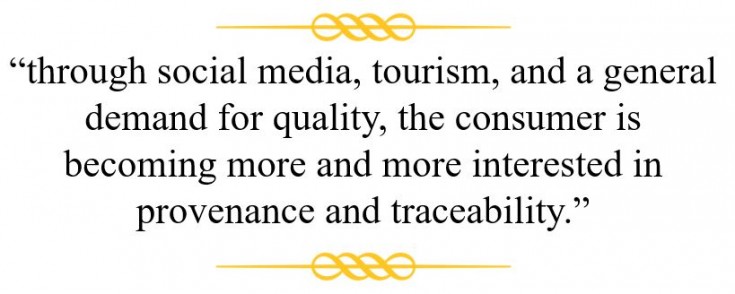
This fast success made me curious and I then reached out to managing director, whisky maker & Master of The Quaich Alex Bruce to find out more!

Could you please tell me a bit more about yourself: where do you come from/grew-up, career background etc. And how did you end up working in the whisky industry?
Born in Edinburgh, grew up in Fife on the family farm. I didn’t have a specific career path in mind until very late on, but a short “stage” with Remy Martin’s marketing department in Paris at the end of my university course got me hooked on the drinks industry.
I returned to Scotland looking for a job in the whisky industry at the wrong time – just as the industry was weathering the last over-production in the late 80’s to mid 90’s. However, several industry veterans advised me that I should get into a wine a spirits career as a starter, and I managed to get a job with Justerini & Brooks in Edinburgh, initially retail and subsequently wholesaling to hotels and restaurants around Scotland.
After 8 years with J&B, which included becoming part of Diageo, I set out on my own with a few colleagues and we set up another wine wholesale business in Edinburgh. On the back of this, we opened a small retail shop in Leith in 2003, and I then approached Jamie Walker (owner of Adelphi) to purchase some of his fine whiskies for our shop. Unfortunately he had just sold the business, but fortunately (and very surprisingly) the new owners offered me the opportunity to join them, and the rest is history…
When I joined Adelphi, there were 2 of us in full time employment, about 3 casks and an assorted 250 bottles of stock. It was a question of increasing the stock, contacting UK stockists and getting on a plane to secure international distribution arrangements.
The journey from then has been both exciting and rewarding, and one that I have never regretted taking. One of the standout factors has been the generosity and kindness shown within the industry – we all have our own brands to sell, but there is still, without doubt, a greater sense of wanting to promote Scotland, not just Scotch.

What is your personal relationship with whisky: first sipped? Any noticeable milestones on your malted journey? A favourite brand/distillery/profile/production country?
I was always aware that there was whisky history on both my mother and father’s side: my mother is the great-great-great grand-daughter of Andrew Usher (senior) who is credited with pioneering blended Scotch whisky in the 1840’s and 1850’s, and my father has played a strong part in the “marketing” of Scotch and Scotland throughout his life, including being an instrumental part of the Keepers of the Quaich from its conception in the 1980’s.
It was probably not an accident, therefore, that I was going to be interested in whisky – my first memorable drams (there were 2 to compare) were thanks to the famous Frank Clark in his whisky shop just outside Aviemore. I had just finished a day’s skiing with his son, John, and Frank gave us a restorative Flora & Fauna Mortlach and Linkwood to try.
From an Adelphi selection point of view, we have been privileged to bottle some extraordinary whiskies over the years: The Whisky That Cannot be Named 50yr old Speyside; Lochside “Single Blend” 1965 46yr old; Heavily sherried Inchgowers and Bunnahabhains from the 1970’s and 1980’s and some much younger sherry bombs from Glenrothes, to name but a few.
Other liquid highlights have included an extraordinary evening in Tokyo where we were served numerous whiskies bottled in the 1950’s-70’s, a White Bowmore and some homemade ice cream covered in 100yr old rum. That, and securing a bottle of Usher’s OVG for my personal collection.
I have been fortunate enough to sample far too many whiskies over the years, all in the aid of procuring suitable casks for Adelphi, so it is very difficult to claim a favourite. However, from a quality consistency point of view (both make and cask), I wouldn’t be unhappy with a Clynelish or a Caol Ila on a desert island.

What do you think is going to be the next “big thing/trend” in whisky in the foreseeable future?
Difficult to predict, but it is going to be very interesting tasting all the single malts from the new distilleries which are appearing.
It is also clear to see that, through social media, tourism, and a general demand for quality, the consumer is becoming more and more interested in provenance and traceability.
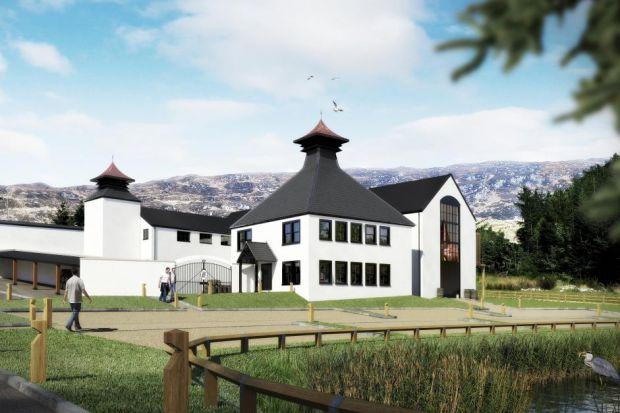
Could you please describe what a typical day in your shoes looks like?
Never dull! Usually up around 6.15am, school run (although it is usually my long-suffering wife, Vikki, who does that), office for 8.30am just a couple of fields away on the farm. The contents of the working day vary considerably, but will normally include: checking in with Fraser, our distillery manager at Ardnamurchan; balancing expectations of importers with stock allocations; confirming these orders; scheduling production (Adelphi) with Gordon, our Ops Director; fixing the labelling machine; scratching around for more casks to trade/buy/sell; designing new packaging; preparing reports for the Board. Home around 6.30/7pm, a glass of red wine or 2 (current preference for Syrah, ideally from France and bio), and possibly a wee dram.
I also try to get up to the distillery at least twice per month, if I am in the UK, but also overseas for 3-4 months of the year building the brand.

I just read in the press that your 1-year-old Ardnamurchan spirit was in high demand (which is an understatement), how would you explain this success? What makes Ardnamurchan spirits unique in your opinion? Within nowadays’ highly-competitive environment how do you think Ardnamurchan is standing out (or will stand out in the future)?
We had no desire to bottle anything from the distillery until it was ready, most likely 4-5yrs down the line. However, we were amazed by the quality of some of our early sherry casks on the upper warehouse floor when we were monitoring maturation in the summer and, after a couple of months of blending and marrying in larger sherry butts, we decided to bottle this 2500 bottle mature spirit in specially designed new packaging.
I am aware that there should always be healthy demand for a distillery’s first release, but we have been really encouraged by the feedback from pre-production samples tasted – this is a genuine “spirit drink”, not just of interest to collectors (quite the opposite in my view).
We have always been committed to absolute quality at the distillery, growing much of our own barley; using expensive yeast; taking 3 times longer than average to run the spirit cut; and spending a fortune on the best quality casks possible. Fortunately, it would appear that this will pay off, and we have certainly found a flavour profile that is both true to its region, and also great to taste.

You’re also involved in other whisky-related projects such as Fusion Whisky (The Glover, Kincardine) & Adelphi: are they complementary?
There is always a possibility that blending Scotch whisky with whiskies from other countries might be seen as a gimmick or, at the very least, a passing fad. However, we have become part of this relatively new category for different reasons: firstly, we want to use the international recipe to promote the accomplishments of our Scottish ancestors in foreign climes, and prove that it is more than relevant today; secondly, it is really exciting being able to blend such different flavours; and thirdly, it is great to be able to work with some of the new distilleries appearing outside of Scotland, and hopefully to be able to work with them going forward alongside our own Ardnamurchan.

How do you see the future for Ardnamurchan? How do you picture the distillery in 5/10 years time? Any crazy dream you’d like to achieve?
It is essential that we keep building quality stock. While we plan to release the occasional small batch (like this first mature spirit), we don’t intend to do a major single malt release until we have enough mature stock available.
Looking into the future, we would like to be a 30-40,000 9 litre case brand, so it is a case of producing enough as soon as possible, to lay down, and continuing to build brand awareness with the limited amount of stock that we will have available in the early years. All this coupled with a continuing absolute attention to quality, provenance and traceability.

Pic sources: Words Of Whisky, Herald Scotland & Scottish Field



